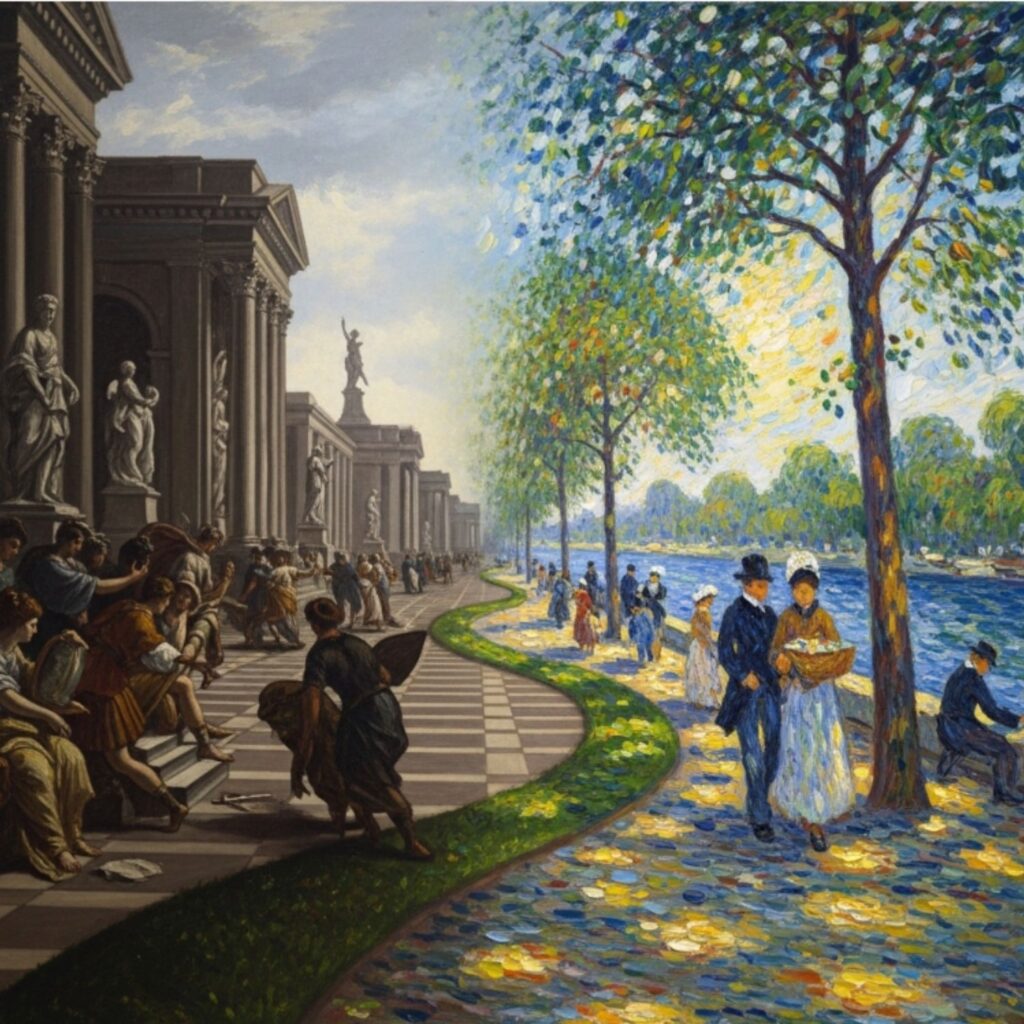
At that time, French art was dominated by the Académie des Beaux-Arts, which set strict standards for subject matter, technique, and style. Highly regarded works had to be historical, religious, or mythological paintings, executed with flawless technique, refined lines, and smoothly blended colors that concealed any brushstrokes. The Paris Salon, the annual exhibition organized by the Académie, was the only path for an artist to gain recognition and success.
However, a group of young artists including Claude Monet, Pierre-Auguste Renoir, Edgar Degas, Camille Pissarro, and Alfred Sisley felt suffocated within that framework. They wanted to escape the studio and paint outdoors (en plein air), to capture the fleeting moments of light and color in real life. They were not concerned with recreating subjects in meticulous detail but aimed to record the immediate “impression” of a scene on the eye. Their technique was also radically different: quick, bold, distinct brushstrokes, using pure colors placed side-by-side to create the vibrating effect of light.
Because of this departure, their works were flatly rejected by the Paris Salon. Conservative critics and the public mocked them, calling their paintings “unfinished,” “sloppy,” and “smears.” The name “Impressionism” itself originated from a derogatory remark by the critic Louis Leroy in response to Monet’s painting, “Impression, Sunrise” (Impression, soleil levant).
Rejected but not defeated, the Impressionists made a bold decision: to organize their own exhibitions. In 1874, they held their first independent exhibition in the studio of the photographer Nadar, an unprecedented event. This was a public declaration of war against the dogmatic academic system. Although the first exhibition and several subsequent ones were not financially successful and continued to receive harsh criticism, they successfully established the voice and existence of a new art movement. They proved that artists had the right to creative freedom and could connect directly with the public without the patronage of the Académie.
One of the greatest contributions of Impressionism was the complete shift in the subject matter of painting. Instead of distant mythological or historical scenes, they found beauty in the modern life unfolding around them. Their canvases were filled with images of bustling Parisian boulevards, cafés, theaters, concerts, leisurely strolls along the Seine, and the suburban countryside. They painted ordinary people—ballet dancers, women shopping, or families enjoying a day off. In this way, the Impressionists broke down the barrier between art and everyday life, bringing art closer to the public and authentically reflecting the rhythm of the industrial age.
Overcoming all initial mockery and hardship, Impressionism gradually won over the public and progressive collectors. Their focus on light, color, and the momentary glance forever changed the way we see painting. They liberated color from its purely descriptive role and transformed it into an independent means of expression.
Most importantly, their rebellious spirit, their courage to pursue a personal vision, and their breaking of established rules paved the way for a series of subsequent modern art movements, such as Post-Impressionism, Fauvism, and Cubism. From works once deemed “unfinished,” Impressionism has become one of the most glorious and influential chapters in art history—an enduring legacy that stands as a testament to the power of innovation and courage.